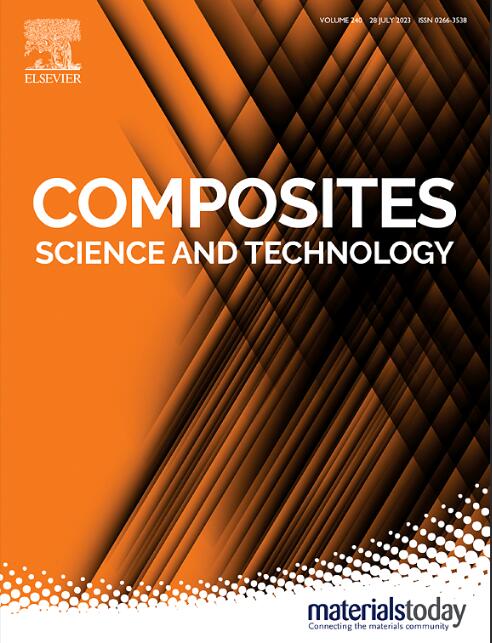A 3D elasto-plastic damage model for fiber-reinforced polymer composites with fiber kinking: Formulation and efficient numerical implementation
IF 8.3
1区 材料科学
Q1 MATERIALS SCIENCE, COMPOSITES
引用次数: 0
Abstract
A 3D elasto-plastic damage (EPD) model for fiber reinforced polymer (FRP) composites has been developed in this study, which integrates a new fiber kinking criterion based on plastic deformation theory and employs an efficient formulation for elasto-plastic updates. The 3D hydrostatic pressure-sensitive plasticity model is embedded into the fiber kinking criterion based on the proportional loading condition, accounting for the objectivity and hydrostatic pressure sensitivity in fiber rotation calculations. Moreover, a transversely isotropic damage constitutive model is constructed with an exponential damage evolution law dependent on the matrix fracture angle. In the elasto-plastic update process of the 3D hydrostatic pressure-sensitive plasticity model, a novel one-equation integration algorithm is developed through the application of variable substitution in the backward Euler implicit scheme. Compared with the direct seven-equation integration algorithm, this one-equation integration algorithm is greatly more efficient, and it could easily improve convergence because it involves only one nonlinear equation. The 3D EPD model is employed to predict the open-hole compression (OHC) strengths and damage patterns of FRP composites, corresponding well with experimental data and providing better accuracy than the model without plasticity. Particularly, the parametric study exhibits that fiber initial misalignments greatly influence the OHC performance and should be calculated accurately.

求助全文
约1分钟内获得全文
求助全文
来源期刊

Composites Science and Technology
工程技术-材料科学:复合
CiteScore
16.20
自引率
9.90%
发文量
611
审稿时长
33 days
期刊介绍:
Composites Science and Technology publishes refereed original articles on the fundamental and applied science of engineering composites. The focus of this journal is on polymeric matrix composites with reinforcements/fillers ranging from nano- to macro-scale. CSTE encourages manuscripts reporting unique, innovative contributions to the physics, chemistry, materials science and applied mechanics aspects of advanced composites.
Besides traditional fiber reinforced composites, novel composites with significant potential for engineering applications are encouraged.
 求助内容:
求助内容: 应助结果提醒方式:
应助结果提醒方式:


